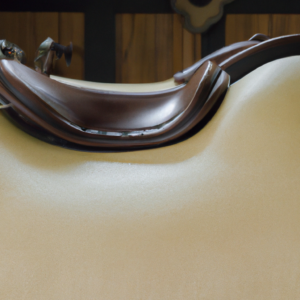In a world that values comfort and productivity, the significance of ergonomic furniture cannot be overstated. Traditional seating solutions have long been plagued by design flaws that compromise our health and well-being. However, a new era of seating is upon us, led by the revolutionary concept of saddle seating. In this article, we’ll journey beyond the realm of conventional seating to explore the future landscape of ergonomic furniture, with a particular focus on saddle seats.

Understanding Ergonomic Furniture
Ergonomic furniture is more than just a passing trend – it’s a cornerstone of a healthier lifestyle. With the rise of sedentary work environments, the need for furniture that supports our bodies is more pressing than ever. Ergonomic principles guide the design of furniture that complements our natural movements, promoting comfort and minimizing strain. By understanding these principles, we unlock the potential for improved well-being.
Evolution of Seating
The evolution of seating design tells a story of both progress and limitations. From traditional wooden chairs to cushioned office chairs, the focus has often been on aesthetics rather than health. However, the rise of ergonomic concerns has prompted a shift in design philosophy. Recognizing the adverse effects of poor seating, designers are now embracing ergonomic solutions that prioritize the long-term health of users.
Saddle Seating: A Revolutionary Approach
At the forefront of this ergonomic revolution is saddle seating. Imagine a seat that resembles a saddle, creating a posture that is more akin to standing than sitting. This innovative design encourages an open hip angle and engages the core muscles, promoting better posture and spinal alignment. Saddle seats challenge the status quo and pave the way for a new era of comfortable and health-conscious seating options.
Benefits of Saddle Seating
The benefits of saddle seating are multifaceted. Beyond the immediate comfort, saddle seats offer substantial advantages for our bodies. By distributing the user’s weight evenly, saddle seats reduce pressure points and alleviate strain on the lower back. This can result in reduced instances of back pain and discomfort, making saddle seats a welcome departure from traditional seating options.
Health Implications and Medical Backing
Saddle seating isn’t just a design whim; it’s grounded in medical science. Health professionals are increasingly recognizing the potential of saddle seats to counteract the negative effects of prolonged sitting. By promoting a neutral spine position and engaging core muscles, saddle seats actively contribute to musculoskeletal health. Medical experts endorse these seats as a proactive step towards a healthier lifestyle.
Applications Across Industries
The versatility of saddle seating extends across various industries. In workplaces, saddle chairs encourage dynamic sitting, fostering greater engagement and focus. Healthcare settings benefit from the enhanced posture support offered by saddle seats. Even creative environments find value in these seats, as they promote natural movements that can boost cognitive functions.
Design and Customization
One size rarely fits all, especially when it comes to seating. Saddle seats come in a range of designs to cater to diverse body types and preferences. Whether you’re tall or petite, there’s a saddle seat for you. Additionally, customizable features allow users to adjust the height, tilt, and other aspects of the seat to ensure a perfect fit. This personalized approach ensures that ergonomic benefits are accessible to everyone.
Challenges and Considerations
Transitioning to saddle seating may pose challenges, particularly for those accustomed to traditional chairs. It takes time for the body to adjust to a new way of sitting, and some users may experience initial discomfort. However, these challenges are surmountable with patience and persistence. Employing proper ergonomic practices and consulting experts can ease this transition.
Innovations in Ergonomic Furniture
While saddle seating garners attention, it’s not the only innovation in the world of ergonomic furniture. Adjustable desks allow users to alternate between sitting and standing, promoting movement throughout the day. Active sitting options, such as wobble stools, engage core muscles and encourage dynamic movements. The future of ergonomic furniture is diverse and dynamic, accommodating various preferences and needs.
Environmental Impact and Sustainability
The future of seating isn’t solely about individual health; it’s also about the health of our planet. Many manufacturers are embracing sustainable materials and production methods, aligning with the growing demand for eco-friendly products. By choosing ergonomic furniture with sustainability in mind, consumers contribute to a greener future while enjoying the benefits of enhanced comfort.
Consumer Awareness and Education
Ergonomic furniture represents a paradigm shift, and with it comes the need for consumer education. Many individuals are unaware of the ergonomic options available to them. As awareness grows, people can make informed decisions about their seating choices. Resources, such as online guides and consultations, play a vital role in guiding consumers towards ergonomic solutions.
Collaboration between Designers and Health Experts
The success of ergonomic furniture hinges on collaboration between designers and health experts. This interdisciplinary approach ensures that furniture not only looks good but also supports the well-being of users. When form meets function, the result is a harmonious blend of aesthetics and health-conscious design.
The Road Ahead: Integrating Ergonomics into Daily Life
Ergonomic furniture marks a crucial step towards a healthier future, but its impact extends beyond seating. By embracing ergonomic principles in daily life, from sitting and standing to moving and resting, individuals can create a comprehensive approach to well-being. The road ahead is paved with opportunities to prioritize our health, one ergonomic choice at a time.
Conclusion
The future of ergonomic furniture is a bright one, driven by innovation, science, and a commitment to our well-being. Saddle seating emerges as a pioneering solution, challenging conventional norms and offering a healthier way to sit. As we embrace ergonomic practices and invest in our health, we embark on a journey towards a more comfortable and fulfilling lifestyle.
